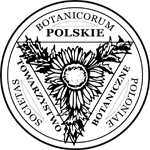Weed infestations of winter wheat depend on the forecrop and the tillage system
Abstract
Keywords
Full Text:
PDFReferences
Horoszkiewicz-Janki J, Korbas M, Mrówczyński M. Metodyka integrowanej ochrony pszenicy ozimej i jarej dla producentów. Poznań: Instytut Ochrony Roślin – Państwowy Instytut Badawczy; 2013.
Woźniak A, Haliniarz M. The after-effect of long-term reduced tillage systems on the biodiversity of weeds in spring crops. Acta Agrobot. 2012;65(1):141–148. https://doi.org/10.5586/aa.2012.052
Santín-Montanyá MI, Martín-Lammerding D, Walter I, Zambrana E, Tenorio JL. Effects of tillage, crop systems and fertilization on weed abundance and diversity in 4-year dry land winter wheat. Eur J Agron. 2013;48:43–49. https://doi.org/10.1016/j.eja.2013.02.006
Gawęda D, Cierpiała R, Harasim E, Wesołowski M, Bujak K. Weed infestation of soybean (Glycine max L. Merr.) under different tillage systems. Acta Agrobot. 2015;68(1):53–58. https://doi.org/10.5586/aa.2015.005
Hernández Plaza E, Navarrete L, González-Andújar JL. Intensity of soil disturbance shapes response trait diversity of weed communities: the long-term effects of different tillage systems. Agric Ecosyst Environ. 2015;207:101–108. https://doi.org/10.1016/j.agee.2015.03.031
Anderson RL. Impact of subsurface tillage on weed dynamics in the central Grein Plains. Weed Technol. 2004;18(1):186–192. https://doi.org/10.1614/WT-03-095R1
Chokor JU, Ikuenobe CE, Akaelu IA. The effect of tillage and herbicides (Rimsulfuron and Codal Gold) on weed regeneration. International Journal of Soil Science. 2008;3:164–168. https://doi.org/10.3923/ijss.2008.164.168
Buczek J, Jarecki W, Bobrecka-Jamro D. Wpływ przedplonów i dawek herbicydów na plon oraz zachwaszczenie pszenicy ozimej. Annales Universitatis Mariae Curie-Skłodowska, Sectio E, Agricultura. 2013;68(2):24–32.
Braun-Blanquet J. Pflanzensoziologie. Grundzüge der Vegetationskunde 3, Aufl. Wien: Springer; 1964.
Piekarczyk M. Wartość przedplonowa łubinu wąskolistnego i jęczmienia jarego dla pszenicy ozimej w zależności od sposobu odchwaszczania łanu. Acta Scientiarum Polonorum, Agricultura. 2007;6(3):59–67.
Smagacz J. Wpływ uproszczeń w uprawie roli na występowanie chorób podstawy źdźbła, zachwaszczenie łanu i plonowanie pszenicy ozimej. Progress in Plant Protection. 2008;48(4):1475–1478.
Małecka I, Blecharczyk A, Dobrzeniecki T. Zachwaszczenie zbóż ozimych w zależności od systemu uprawy roli. Progress in Plant Protection. 2006;46(2):253–255.
Shrestha A, Kneževiü SZ, Roy RC, Ball-Coelho BR, Swanton CJ. Effect of tillage, cover crop and crop rotation on the composition of weed flora in a sandy soil. Weed Res. 2002;42:76–87. https://doi.org/10.1046/j.1365-3180.2002.00264.x
Tørresen KS, Skuterud R. Plant protection in spring cereal production with reduced tillage. IV. Changes in the weed flora and weed seedbank. Crop Prot. 2002;21:179–193. http://doi.org/10.1016/S0261-2194(01)00081-3
Davis AS, Karen A, Renner KA, Katherine L, Gross KL. Weed seedbank and community shifts in a long-term cropping systems experiment. Weed Sci. 2005;53(3):296–306. https://doi.org/10.1614/WS-04-182
Peigné J, Ball BC, Roger‐Estrade J, David C. Is conservation tillage suitable for organic farming? A review. Soil Use Manag. 2007;23(2):129–144. https://doi.org/10.1111/j.1475-2743.2006.00082.x
Tuesca D, Puricelli E, Papa JC. A long‐term study of weed flora shifts in different tillage systems. Weed Res. 2001;41(4):369–382. https://doi.org/10.1046/j.1365-3180.2001.00245.x
Ruisi P, Frangipane B, Amato G, Badagliacca G, Di Miceli G, Plaia A, et al. Weed seedbank size and composition in a long‐term tillage and crop sequence experiment. Weed Res. 2015;55(3):320–328. https://doi.org/10.1111/wre.12142
Ozpinar S. Effects of tillage systems on weed population and economics for winter wheat production under the Mediterranean dryland conditions. Soil Tillage Res. 2006;87(1):1–8. https://doi.org/10.1016/j.still.2005.02.024
Bilalis D, Efthimiadis P, Sidiras N. Effect of three tillage systems on weed flora in a 3‐year rotation with four crops. J Agron. Crop Sci. 2001;186(2):135–141. https://doi.org/10.1046/j.1439-037X.2001.00458.x
Ozpinar S, Ozpinar A. Influence of tillage and crop rotation systems on economy and weed density in a semi-arid region. J Agric Sci Technol. 2011;13:769–784.
Kwiatkowski CA, Harasim E, Wesołowski M. Effects of catch crops and tillage system on weed infestation and health of spring wheat. J Agric Sci Technol. 2016;18:999–1012.
Weber R, Sekutowski T, Owsiak Z. Zmienność zachwaszczenia odmian pszenicy ozimej w zależności od systemu uprawy roli. Progress in Plant Protection. 2014;54(2):178–184. https://doi.org/10.14199/ppp-2014-029
DOI: https://doi.org/10.5586/aa.1744
|
|
|






